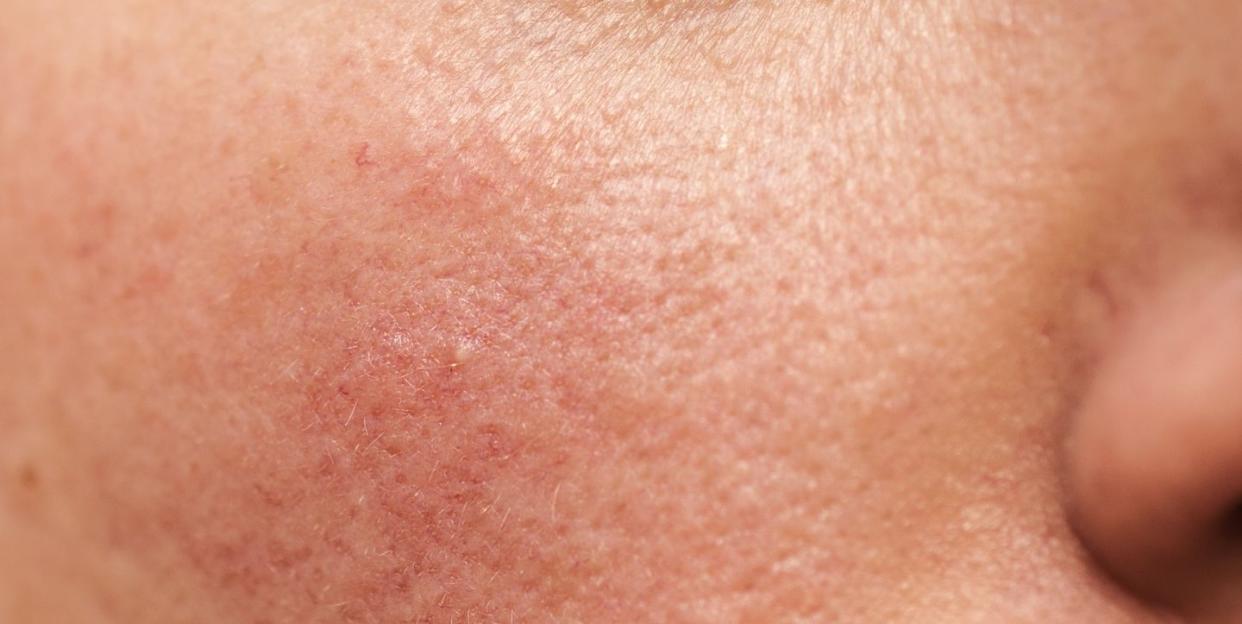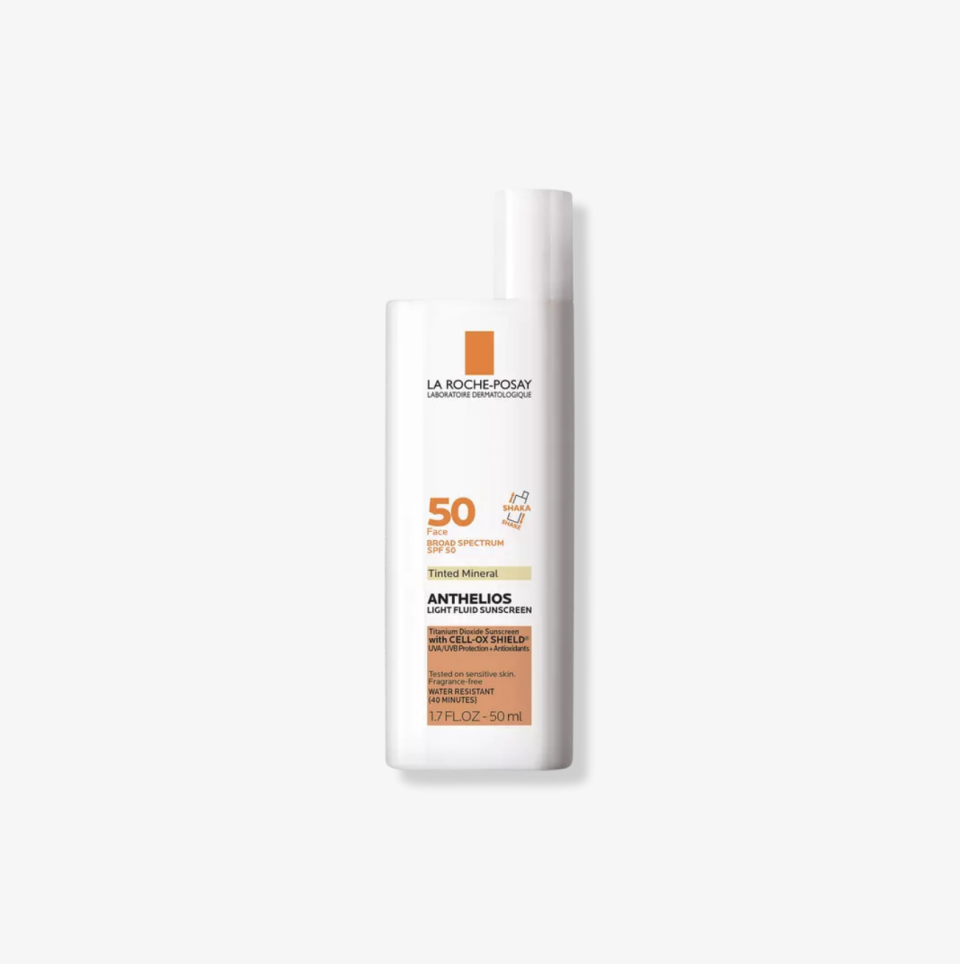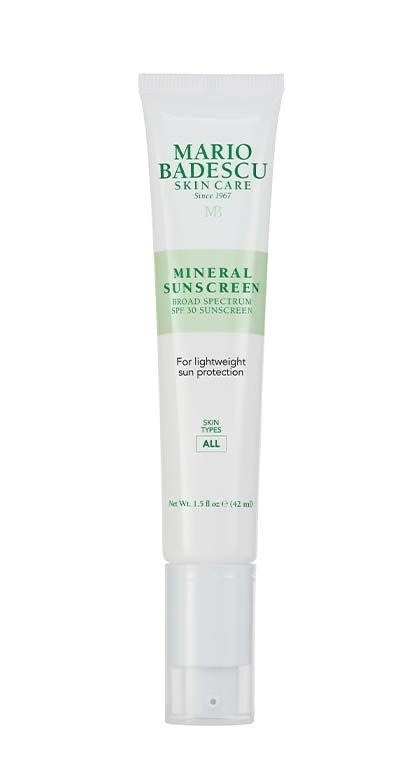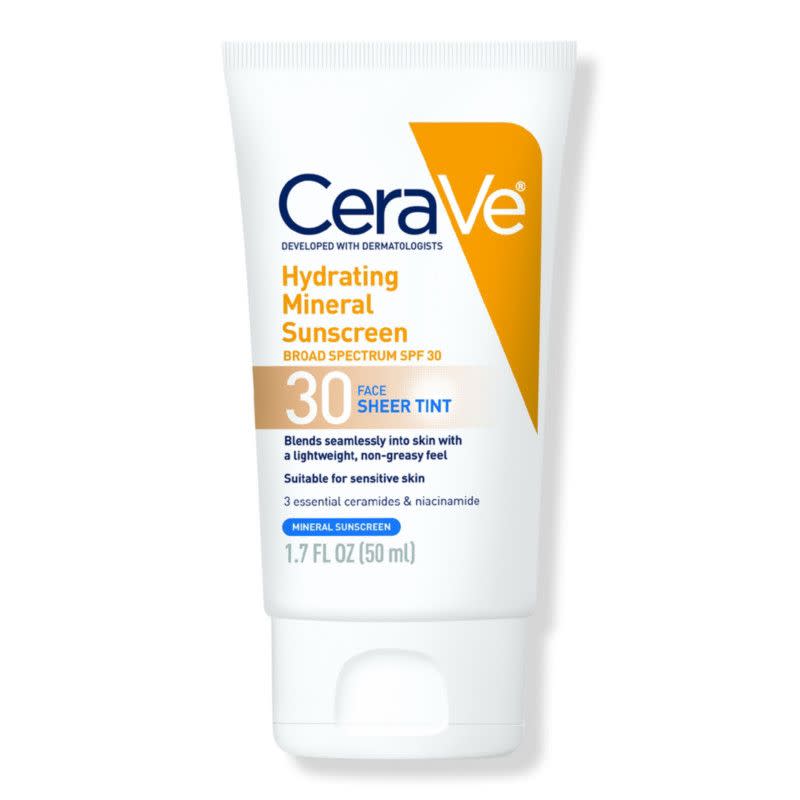How To Get Rid Of Those Annoying Red Patches On Your Skin

"Hearst Magazines and Yahoo may earn commission or revenue on some items through these links."
So you've been dealing with annoying red patches on your skin, but you're not sure why it's happening to you or what to do about it. Facial redness is pretty common, but no two people are alike, which is why it's always best to get an analysis from your doctor before jumping to conclusions.
Meet the experts: Tracy Evans, MD, is a board-certified dermatologist and medical director at Pacific Skin and Cosmetic Dermatology. Blair Murphy-Rose, MD, is a board-certified dermatologist at Laser & Skin Surgery Center of New York.
"I always say people are snowflakes. They need customized skin routines," says Tracy Evans, MD, board-certified dermatologist and medical director at Pacific Skin and Cosmetic Dermatology. "One person could be highly allergic to something and the other could have true rosacea."
Keep reading for more information on how you can treat your skin when redness strikes.
1. Avoid irritating ingredients
Redness can be caused by skin irritation or allergies to certain ingredients. Blair Murphy-Rose, MD, a board-certified dermatologist at Laser & Skin Surgery Center of New York, notes that alpha hydroxy acids, salicylic acid, and vitamin A-based products like retinol or prescription retinoids are known for causing redness.
Additionally, abrasive scrubs and benzoyl peroxide can also irritate the skin, especially for those who have acne, adds Dr. Evans. So it may be helpful to check all the products you currently use on your face to see if any of those ingredients pop up.
2. Try a cold compress
A cold compress can be helpful, but that doesn't mean an ice pack is the answer. In fact, freezing the skin can also bring blood flow to the face and cause redness, says Dr. Evans. Instead, try applying a cool cloth or sitting in cool places.
"Cold temperature constricts blood vessels and makes them smaller. When we make the blood vessels in the skin smaller, it pushes out the blood," says Dr. Murphy-Rose. "When it's cold, our blood vessels constrict because the body wants to conserve all that heat and bring it closer to our vital organs like the brain and the heart."
3. Use a mineral sunscreen
Many people with redness tend to have sensitive skin, so opting for a mineral sunscreen instead of a chemical one is always a safe bet.
"The mineral ingredients are titanium dioxide and zinc oxide, and it would be very unlikely for someone to be irritated by them," says Dr. Murphy-Rose. "The best sunscreens are mineral sunscreens, but particularly so for those with sensitive skin because they'll be more gentle in general." She also points out that those ingredients are so well-tolerated that they're often found in certain rash creams.
Anthelios Tinted Mineral Ultra-Light Fluid Broad Spectrum SPF 50

Anthelios Tinted Mineral Ultra-Light Fluid Broad Spectrum SPF 50
$38.99
ulta.com
ulta.comMineral Sunscreen SPF 30

Mineral Sunscreen SPF 30
$28.00
mariobadescu.com
mariobadescu.comHydrating Sunscreen Face transparent Tint SPF 30

Hydrating Sunscreen Face transparent Tint SPF 30
$16.99
ulta.com
ulta.com4. Try a face mask
You should always approach DIY face masks with caution. That said, certain ingredients such as aloe, cucumber, or centella asiatica have soothing properties that can help with redness, says Dr. Murphy-Rose.
And if you prefer buying your face mask from the store, consider buying a silicone gel option that can be chilled to help decrease inflammation and reduce redness.
5. Switch up your makeup routine
At the end of the day, anything you're putting on your skin can cause irritation, including your makeup. "It's mostly the acidic stuff that I like to make sure my patients stay away from," says Dr. Evans. "Sometimes people like to use tinted sunscreens with salicylic acid in them [for acne], but those are so drying that it's going to make it worse."
Instead, she recommends investing in mineral-based makeup from brands like Bare Minerals and Clinique, which are hypoallergenic.
6. Consider laser treatments
Some people have superficial blood vessels that show up in random areas that contribute to redness. According to Dr. Evans, the definitive way to treat that redness (medications aside) is by shutting the vessels down with laser treatments.
One method, in particular, uses KPL lasers that use wavelength light to attack hemoglobin. "The laser light will target heat and destroy the areas where the hemoglobin is, which is the blood in the blood vessels," explains Dr. Murphy-Rose. "By doing so, it heats up the blood vessel walls, and they go away."
7. Try a topical cream
When it comes to topical creams, 10 percent cortisone is the best thing to tackle inflammation. "It's a corticosteroid, and it helps the redness subside by making the white blood cells reduce the immune reaction," says Dr. Murphy-Rose.
Unfortunately, something like moisturizer won't be able to help with redness as much, but you can look for one with soothing ingredients. As previously mentioned, aloe, cucumber, and centella asiatica are all green flags.
8. Make bigger lifestyle changes
Sometimes, redness is caused by factors unrelated to what's being put on the skin but rather what's being put in the body. If you have rosacea, for example, you may have sensitivity to spicy foods, alcohol, or working out, says Dr. Evans. This means you might want to avoid those foods, be mindful of alcohol intake, or make sure to cool off quickly after a workout.
If you're still unsure which treatment method is right for you, reach out to your dermatologist to talk through your options.

What causes redness on the face?
There are various reasons why you may experience redness, all of which may require a different approach for treatment. You could blush from embarrassment or flush after a hard workout or eating spicy foods.
However, redness can also stem from other skin conditions such as rosacea, eczema, contact dermatitis, sunburn, and acne, says Dr. Murphy-Rose. She adds that some people can also get redness from over-exfoliating and even taking medications.

Is redness a sign of a serious skin condition?
Not all the time. Again, everyone is different, so while an allergy or sunburn might cause your skin to turn red, someone else might be suffering from redness because of a more serious condition like eczema or rosacea. If you're unsure why your redness is occurring, it's best to reach out to your doctor or dermatologist.
You Might Also Like

